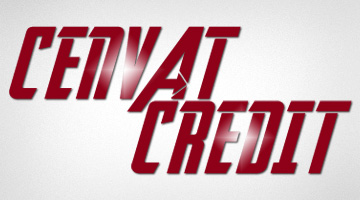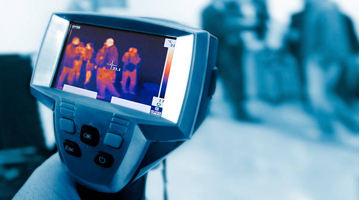CX - Capping of CENVAT Credit on Inputs cleared by EOU - Rules 3(4) &3(6) of CCR are not mutually exclusive; 3(6) would apply even where inputs had been received u/r 3(4): High Court
By TIOL News Service
MUMBAI, APR 13, 2019: THIS is a Revenue appeal against the order dated 13.02.2007 by the CESTAT.
The facts in short (as crystrallised while reporting the Tribunal decision):
A manufacturer [M/s IIL] procures inputs from a 100% EOU [M/s KIOCL] & avails Cenvat Credit.
Later, this manufacturer removes these inputs "as such" from his factory to another manufacturer [M/s IMIL]. While effecting such removal, he reverses the quantum of credit availed by him and issues an invoice referred under rule 7. This is also as per rule 3(4) of the CCR, 2002. Great - so the rules have been observed with precision!
As per rule 3(5) of the said rules, the amount paid under sub rule (4) is eligible as Cenvat credit as if it was duty paid by the person who removed such goods under sub rule (4). So the consignee manufacturer availed the "amount paid" by the consignor manufacturer as Cenvat Credit. Seems alright!
But the consignee [M/s IMIL] has a problem. The department would not allow him to take this credit. They issued demand notices worth Rs.7.69 crores alleging that the consignee ought to have taken credit as per the formula prescribed in terms of rule 3(6)(a) viz. 50% of [X multiplied by (1+BCD/100) multiplied by (CVD/100)], where BCD & CVD denoted advalorem rates in respect of basic customs duty and additional duty of customs leviable on the inputs or the capital goods respectively and X denoted the assessable value, as the inputs were produced or manufactured by a 100% EOU.
The demand was confirmed and the case came up before the Tribunal.
The CESTAT while setting aside the impugned order and allowing the appeal held thus - Rule 3(6) of the CCR, 2002 only restricts the eligibility to credit of the duties specified in rule 3(1) and does not bar entitlement to credit of the entire amount paid in terms of Rule 3(4) at the time of clearance of inputs as such.
It was also observed - … the law laid down by the Tribunal in Kerala Electronic Corpn. Vs. CCE 1996(84)ELT 44 and Owenbilt vs. CCE 1998(101)ELT642 holding that re-assessment cannot be ordered at the input receiver's end (In this case the department is really seeking to re-asssess input cleared as such by M/s IIL) is squarely applicable and following the ratio thereof, we hold that the credit of the amount involved is admissible to the appellants…
We reported this order as 2007-TIOL-640-CESTAT-MUM .
Revenue was not a bit happy with this decision and filed an appeal before the Bombay High Court. [CEA No. 240 of 2007]
The appeal was admitted on the following substantial questions of law:-
"(a) Whether M/s. IIL correctly reversed the CENVAT Credit while clearing the goods (inputs) to their sister concern M/s. IMIL?
(b) Whether M/s. IMIL has correctly availed the CENVAT Credit as prescribed under Rule 3(6)(a) of CENVAT Credit Rules?"
After extracting the provisions of rule 3 of CCR, the High Court noted -
Question (a):
+ Rule 3(4) of the Credit Rules 2002 is clearly applicable. Thus, M/s. IIL is entitled to remove the Iron Ore Pellets received from M/s. Kudremukh on payment of an amount equal to the credit taken in respect of such inputs on receipt from M/s. Kudremukh. In turn, the Respondent-IMIL is eligible to take CENVAT Credit on the amount which has been paid by M/s. IIL on removal the Iron Ore Pellets purchased from M/s. Kudremukh as such to it. This on the basis of the amount shown under the invoice issued by M/s. IIL. This in accord with Rule 3(5) of the Credit Rules 2002.
+ In the above facts and the self evident position in law, no fault can be found with M/s. IIL, reversing the CENVAT Credit to the extent of credit which it had availed in respect of the Iron Ore Pellets which it had received from M/s. Kudremukh. Therefore, when removing the Iron Ore Pellets as such i.e. without it being used in manufacture of any other product or it being processed per se, it had correctly in terms of Rule 3(4) of the Credit Rules, 2002 had correctly reversed the CENVAT Credit taken. This in view of the clear mandate of Rule 3(4) of the Credit Rules 2002.
Concluding that no fault can be found with M/s. IIL reversing the CENVAT Credit taken on receipt of Iron Ore Pellets from M/s. Kudremukh while clearing the Iron Ore Pellets to the Respondent-IMIL, question (a) was answered in the affirmative i.e. in favour of the Respondent-Assessee and against the Appellant-Revenue.
Insofar as the Question (b) is concerned, the High Court observed thus -
++ Rule 3(1) of the Credit Rules 2002 provides that a manufacturer or the producer of the final product is allowed to take credit, inter alia in respect of duties of excise paid on the inputs or capital goods received by it to the extent it is already been paid on inputs/ capital goods. Thus, providing for taking credit of the entire amount of duty paid on the inputs and/or capital goods is available to the manufacture/ producer who receives the inputs under the Credit Rules 2002.
++ However, Section 3(6) of the Credit Rules 2002, begins with a non-obstante clause to anything contained in Rule 3(1) of the Credit Rules 2002.Therefore, this restricts the taking of a credit on the inputs i.e. Iron Ore Pellets if the same is being used by the Respondent in the manufacture of final products as if the inputs have been manufactured among others by a 100% EOU such as in this case. This restriction is on the taking of the CENVAT Credit of the inputs used in the manufacture of final products.
++ Thus, the restriction/capping of taking CENVAT Credit would, therefore, apply even if the supplier of the inputs is not the 100% EOU itself, as the restriction is not on the basis of supplier/seller of the inputs but the manufacturer of the inputs and is applicable only where the recipient uses the inputs in further manufacture. Thus, the above Rule 3(6) of Credit Rules 2002 would apply even where inputs had been received under Rule 3(4) of the Credit Rules, 2002.
++ It is not as though Rule 3(4) and 3(6) of Credit Rules, 2002 are mutually exclusive. Therefore, the impugned order of the Tribunal proceeds incorrectly on the basis that there can be no limitation/capping on the credit taken by the Respondent M/s. IMIL where the goods have been supplied by M/s. IIL i.e. supplier in terms of Rule 3(4) of the Credit Rules, 2002. Thus it is a complete misreading of the provisions.
++ The capping of the CENVAT Credit is only in case of that manufacturer who uses the inputs in further manufacture and does not apply to a manufacturer who on acquisition of inputs does not use it for further manufacture but removes it as such so as to be governed by Rule 3(4) of the Credit Rules 2002.Thus in such case Rule 3(6)(a) of the Credit Rules, 2002 will prevail over Rule 3(5) of the Credit Rules, 2002 as it reduces the availing of credit in respect of goods manufactured by a 100% EOU.
On the submission by the respondent that the entire exercise of restricting the credit is an exercise for reassessing the duty paid by the supplier viz. M/s. IIL, the High Court disagreed by observing that it had held in answer to question (a) that M/s. IIL had correctly paid the CENVAT Credit while supplying the inputs to the Respondent M/s. IMIL. And, therefore, this (issue) had no bearing to the question of the quantum of credit which can be taken by the Respondent - M/s. IMIL. Inasmuch as the same is restricted/capped by virtue of Rule 3(6) of the Credit Rules, 2002.
Case laws cited bythe Respondent were distinguished on the ground that in none of the cases Rule 3(6)(a) of the Credit Rules 2002 was the subject matter of consideration.
The next submission by the respondent that Rule 3(6) of the Credit Rules, 2002 is unworkable as every recipient of inputs availing CENVAT Credit would then have to find out the source of the input, which is impossible, was held to be academic as it was an undisputed position that the inputs have been manufactured by a 100% EOU.
Therefore, the substantial question of law viz. question (b) was answered in the negative i.e. in favour of the Appellant-Revenue and against the Respondent-Assessee.
The Revenue Appeal was allowed in the above terms.
(See 2019-TIOL-817-HC-MUM-CX)














